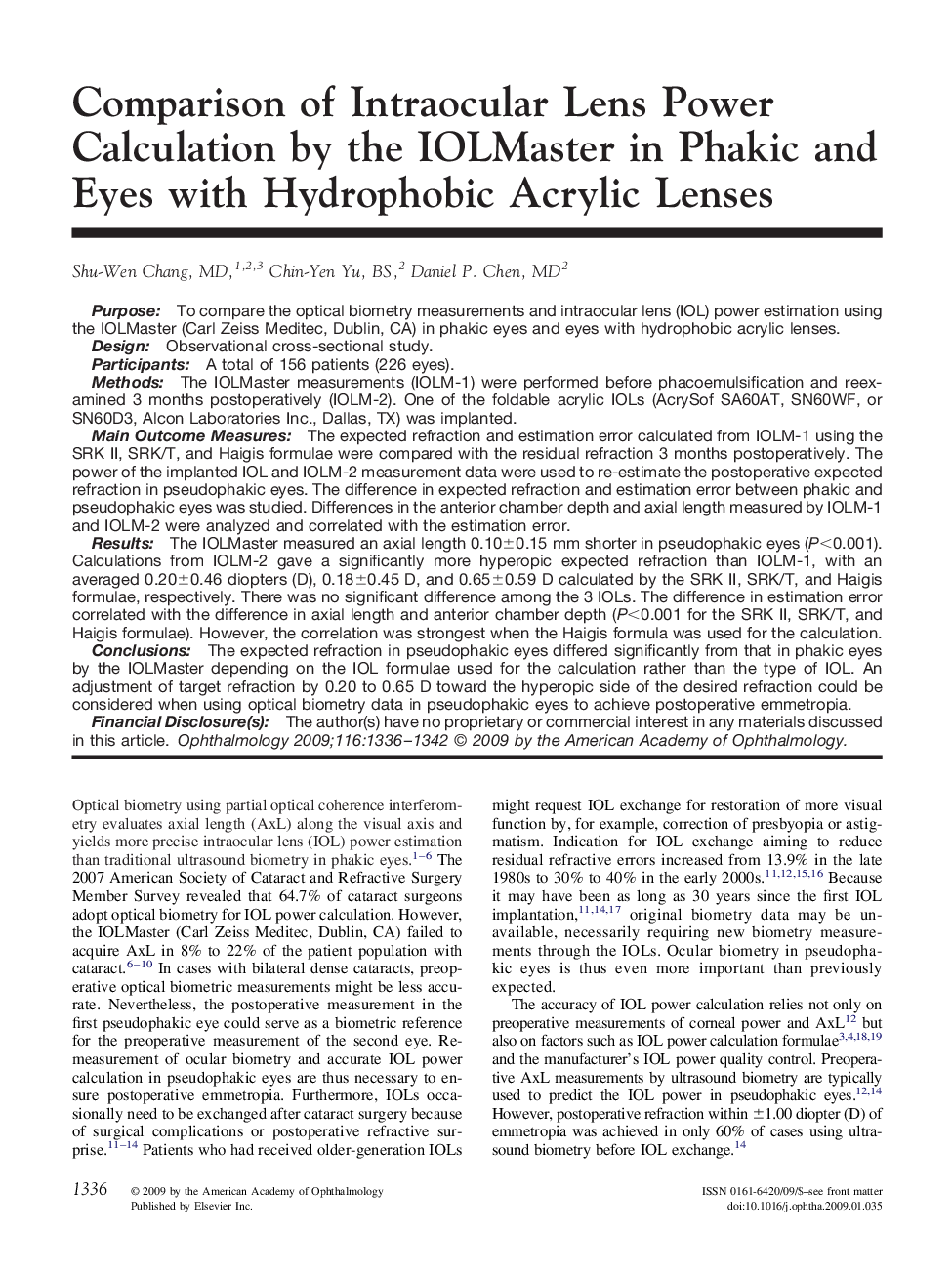| کد مقاله | کد نشریه | سال انتشار | مقاله انگلیسی | نسخه تمام متن |
|---|---|---|---|---|
| 4029008 | 1262493 | 2009 | 7 صفحه PDF | دانلود رایگان |

PurposeTo compare the optical biometry measurements and intraocular lens (IOL) power estimation using the IOLMaster (Carl Zeiss Meditec, Dublin, CA) in phakic eyes and eyes with hydrophobic acrylic lenses.DesignObservational cross-sectional study.ParticipantsA total of 156 patients (226 eyes).MethodsThe IOLMaster measurements (IOLM-1) were performed before phacoemulsification and reexamined 3 months postoperatively (IOLM-2). One of the foldable acrylic IOLs (AcrySof SA60AT, SN60WF, or SN60D3, Alcon Laboratories Inc., Dallas, TX) was implanted.Main Outcome MeasuresThe expected refraction and estimation error calculated from IOLM-1 using the SRK II, SRK/T, and Haigis formulae were compared with the residual refraction 3 months postoperatively. The power of the implanted IOL and IOLM-2 measurement data were used to re-estimate the postoperative expected refraction in pseudophakic eyes. The difference in expected refraction and estimation error between phakic and pseudophakic eyes was studied. Differences in the anterior chamber depth and axial length measured by IOLM-1 and IOLM-2 were analyzed and correlated with the estimation error.ResultsThe IOLMaster measured an axial length 0.10±0.15 mm shorter in pseudophakic eyes (P<0.001). Calculations from IOLM-2 gave a significantly more hyperopic expected refraction than IOLM-1, with an averaged 0.20±0.46 diopters (D), 0.18±0.45 D, and 0.65±0.59 D calculated by the SRK II, SRK/T, and Haigis formulae, respectively. There was no significant difference among the 3 IOLs. The difference in estimation error correlated with the difference in axial length and anterior chamber depth (P<0.001 for the SRK II, SRK/T, and Haigis formulae). However, the correlation was strongest when the Haigis formula was used for the calculation.ConclusionsThe expected refraction in pseudophakic eyes differed significantly from that in phakic eyes by the IOLMaster depending on the IOL formulae used for the calculation rather than the type of IOL. An adjustment of target refraction by 0.20 to 0.65 D toward the hyperopic side of the desired refraction could be considered when using optical biometry data in pseudophakic eyes to achieve postoperative emmetropia.Financial Disclosure(s)The author(s) have no proprietary or commercial interest in any materials discussed in this article.
Journal: Ophthalmology - Volume 116, Issue 7, July 2009, Pages 1336–1342